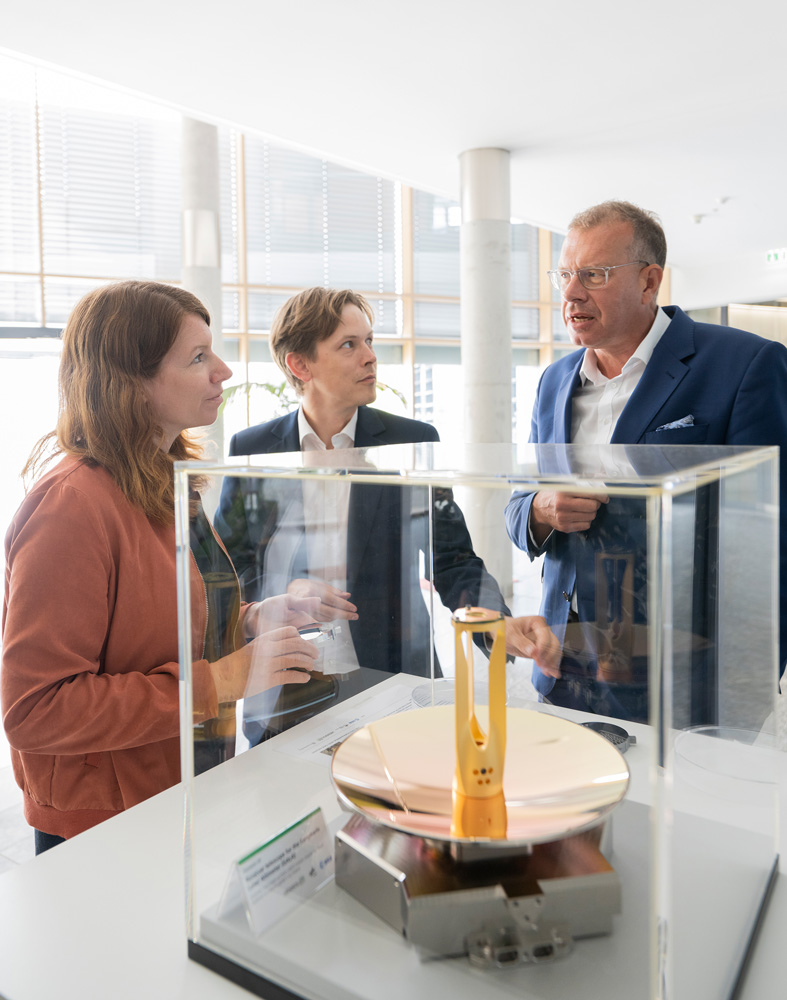With extensive photonics know-how, scientists from Jena want to contribute to meeting these challenges – for example, by researching quantum-encrypted satellite communication or developing instruments for climate observation. Through start-ups and close networking between research and industry, a true “innovation ecosystem” has emerged in Jena. Members of this network met on August 25 to exchange ideas at the Fraunhofer Institute in Jena.
“In Jena, we have managed to successfully transfer knowledge from many decades of research to industry. This makes us a good example of how cooperation and transfer can work,” said Dr. Matthias Beier, founder of SPACEOPTIX GmbH. The Fraunhofer IOF spin-off developed a reflecting telescope that measures surface temperatures from the ISS and thus facilitates conclusions about the global climate and the water balance of various regions. “This project shows what targeted funding by politics can make possible,” added Dr. Sebastian Händschke, project manager of the Digital Innovation Hub Photonics. The Hub, funded by the Thuringian Ministry of Economy, Science and Digital Society, supported the founders in launching their start-up.
The guests from the German government who were present at the event were impressed. Member of the Bundestag Dr. Anna Christmann, who is both the Government's Coordinator for German Aerospace Policy and the Federal Ministry of Economics and Climate Action’s Commissioner for Digital Economy and Start-Ups, visited the institute and exchanged views with the participants about Jena as a central aerospace hub in Germany. “It is extremely exciting to get to know such innovation ecosystems like the one in Jena,” Christmann explained.
But despite all the enthusiasm about the multifaceted photonics research at the site, current challenges such as energy security, ways to achieve CO2-neutral research and a shortage of skilled workers were also discussed critically. “We need programs that attract young, international specialists and offer them the opportunity to develop their own ideas and shape Germany as a research location,” Prof. Tünnermann demanded, highlighting Jena as an ideal model region for corresponding projects. Close links between university, research institutes and industry offer young scientists unique career opportunities here – whether in research or in their own company.
